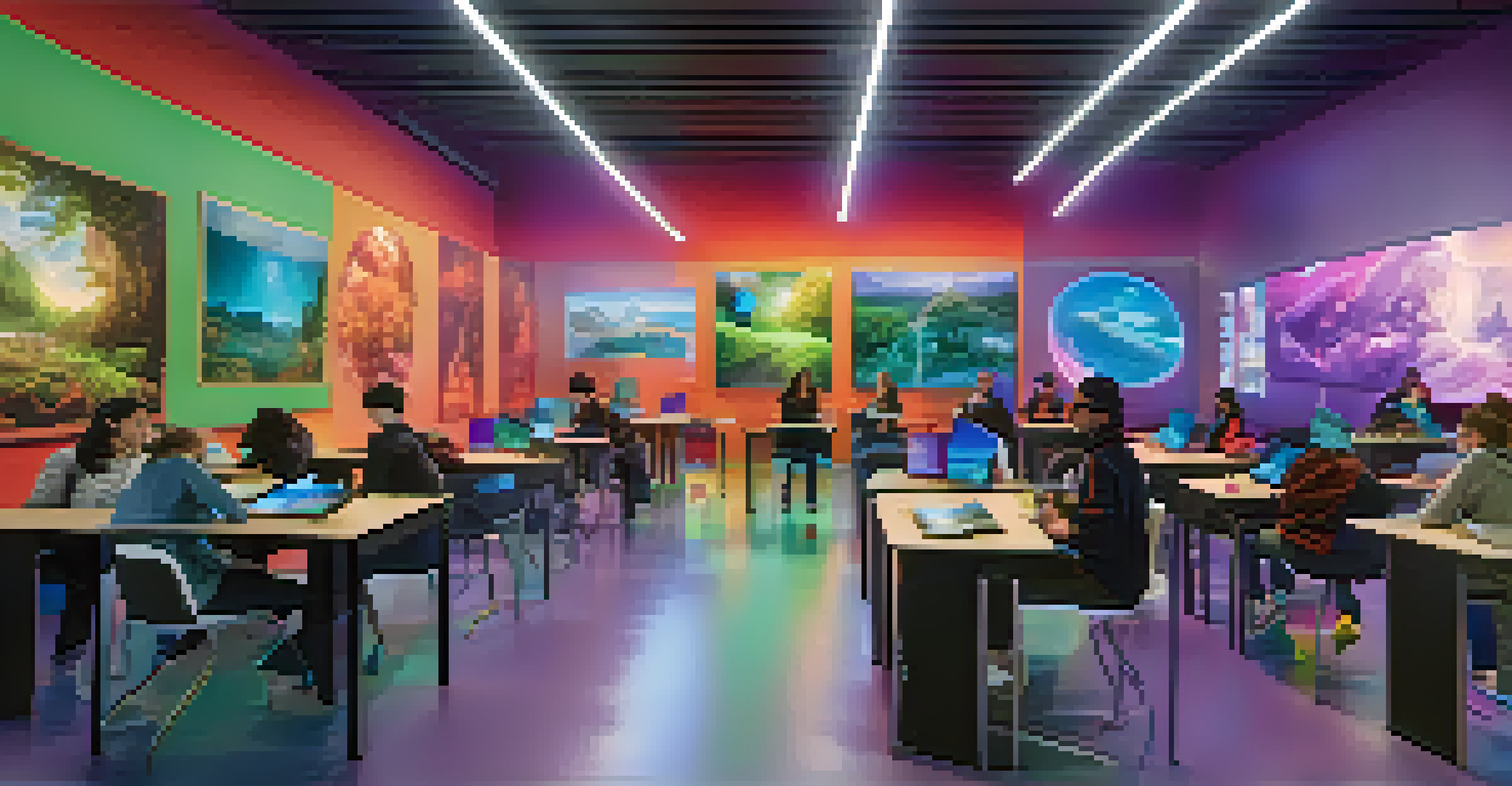How Technology Can Enhance Educational Equity Opportunities

Understanding Educational Equity in Today's Context
Educational equity means providing all students with the resources they need to succeed, regardless of their background. In today's diverse society, this concept is more critical than ever, as disparities in access to quality education can have lasting impacts. Technology plays a vital role in leveling the playing field, creating pathways for students to access the same opportunities.
Education is the most powerful weapon which you can use to change the world.
For instance, students in underfunded schools often lack access to advanced coursework and resources available in more affluent districts. By leveraging technology, we can offer online courses, virtual tutoring, and educational resources that can reach students anywhere. This not only enhances learning but also fosters a sense of belonging among students who might otherwise feel isolated in their educational journeys.
Ultimately, understanding educational equity allows us to appreciate why technology is not just a tool but a necessity in the modern educational landscape. It helps us envision a future where every student can thrive, regardless of their circumstances.
Digital Learning Platforms Bridging Gaps
Digital learning platforms, like Khan Academy or Coursera, have revolutionized how students access information. These platforms provide a wealth of resources at little or no cost, making high-quality education more accessible than ever. Students can learn at their own pace, revisit lessons, and explore subjects that may not be available in their local schools.

Moreover, these platforms often include features that cater to different learning styles, such as interactive quizzes and video tutorials. This personalized approach helps students who may struggle in traditional classroom settings feel more engaged. It’s like having a personal tutor available 24/7, which can significantly enhance their learning experience.
Equity Requires Access to Resources
Educational equity emphasizes the need for all students to have access to resources and technology, regardless of their socioeconomic background.
By providing diverse learning materials, digital platforms empower students to take charge of their education, fostering independence and promoting equity. This transformation is a crucial step toward ensuring that all students have the tools they need to succeed.
Access to Technology as a Fundamental Right
In our increasingly digital world, access to technology has become a fundamental right. Unfortunately, not all students have the same access to devices or the internet, which can create significant barriers to learning. Schools and organizations must prioritize providing technology to underserved communities to ensure that every student can benefit from digital resources.
Technology will not replace great teachers, but technology in the hands of great teachers can be transformational.
Initiatives like providing laptops or tablets to students in need can make a world of difference. Imagine a student who has always struggled with math suddenly able to access engaging online tutorials and interactive exercises. This access can ignite a passion for learning that transforms their academic journey.
When we advocate for technology access as a right, we’re working toward a more equitable educational landscape. It’s about creating opportunities for all students, regardless of their socioeconomic status, to thrive in a digital world.
The Role of Teachers in Technological Integration
Teachers are at the forefront of integrating technology into the classroom, and their role is pivotal. They guide students through the digital landscape and help them navigate online resources effectively. By incorporating technology into their teaching methods, educators can create a more dynamic and inclusive learning environment.
For example, teachers can utilize collaborative tools like Google Classroom to foster teamwork among students, regardless of their physical location. This not only helps students develop essential skills like communication and collaboration but also encourages them to learn from one another.
Technology Personalizes Learning
Through data and analytics, technology allows for personalized learning experiences that cater to individual student needs and strengths.
Furthermore, professional development for teachers in technology use is crucial. When educators feel confident in their tech skills, they can better support their students, ensuring that technology enhances learning rather than hinders it.
Personalized Learning Through Data and Analytics
Technology enables the use of data and analytics to personalize learning experiences for students. By tracking progress and identifying areas of struggle, educators can tailor their instruction to meet individual needs. This personalized approach ensures that no student falls through the cracks.
Imagine a classroom where each student receives a customized learning plan based on their strengths and weaknesses. With the help of technology, teachers can easily create and adjust these plans, providing targeted support that can significantly boost student performance.
Personalized learning not only enhances academic success but also builds students' confidence. When students see their progress reflected in tailored instruction, they are more likely to stay engaged and motivated.
Community Engagement Using Technology
Community engagement is essential in promoting educational equity, and technology can enhance this connection. Online platforms can bring together educators, parents, and community members to collaborate on initiatives that support students. This collective approach ensures that everyone has a stake in the educational success of their community.
For example, virtual town hall meetings can facilitate discussions about local education issues, allowing community members to voice their concerns and suggestions. This not only empowers parents but also fosters a sense of community ownership over local schools.
Community Engagement is Key
Engaging the community through technology fosters collaboration among educators, parents, and local members, enhancing support for students.
When technology bridges the gap between schools and communities, it can lead to innovative solutions for educational challenges. A united effort can create a supportive environment where students feel valued and encouraged to excel.
The Future of Technology and Educational Equity
As we look to the future, the potential for technology to enhance educational equity is immense. Emerging technologies, such as artificial intelligence and virtual reality, offer exciting opportunities to create immersive learning experiences. These innovations can help cater to different learning styles and needs, making education more inclusive.
However, it’s essential to approach these advancements thoughtfully. Ensuring that all students have access to the latest technologies and training is crucial for preventing further disparities. We must work together to create an educational landscape where technology serves as a bridge, not a barrier.

Ultimately, the future of educational equity hinges on our ability to harness technology effectively. By prioritizing access, support, and community involvement, we can create a more equitable educational system for generations to come.